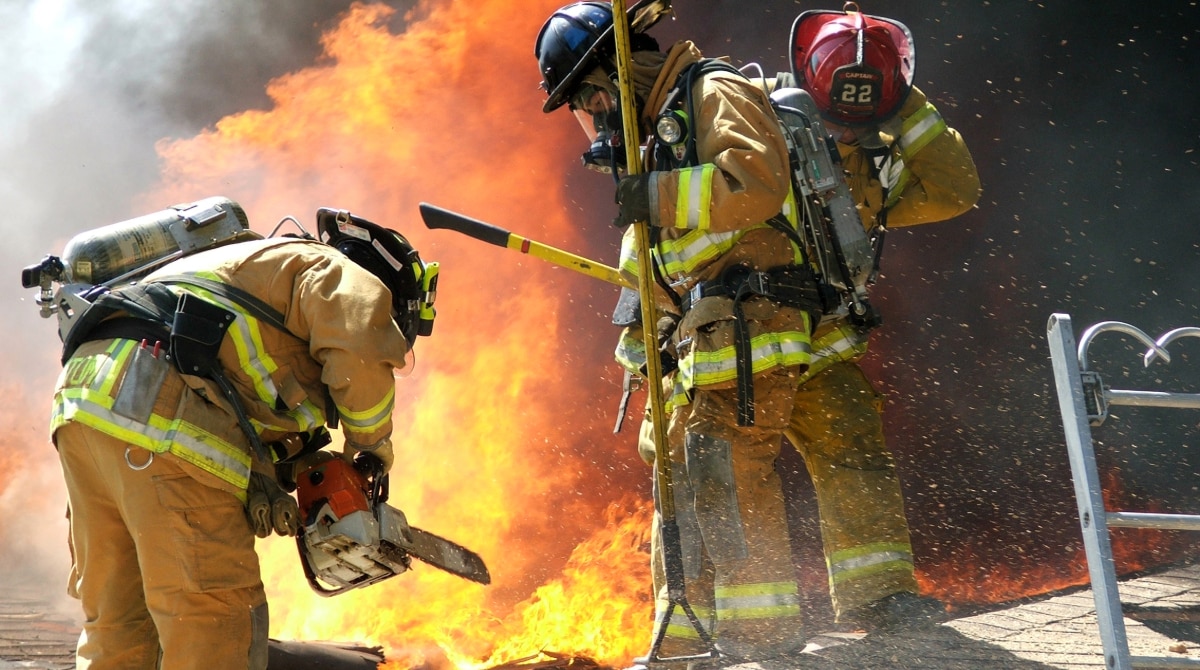Key points
- Anyone can get rhabdomyolysis (rhabdo), but some workers are at a higher risk than others.
- Working in hot environments can increase workers' chances of getting rhabdo.
- Physically demanding work can put workers at increased risk.
- We currently do not know all the rhabdo risk factors.

What increases risk

Anyone can get rhabdo, but some workers are at a higher risk than others. People who work in hot environments or perform strenuous physical tasks have a higher chance of getting rhabdo.
Common causes of rhabdo in the workplace
High body temperature
Hot work conditions can increase your likelihood of developing rhabdo. This includes:
- Working outdoors or in hot environments
- Working in or near hot processes (e.g., asphalt pavers)
- Wearing personal protective equipment (PPE) can trap body heat
For example, structural firefighters wear heavy coats and pants. This PPE can trap body heat. This can increase their risk of rhabdo.
Overuse of muscles
People who work physically demanding jobs have a greater chance of developing rhabdo. This includes jobs that involve:
- High levels of physical exertion
- Prolonged periods of physical exertion
- High intensity workouts
- Physical fitness tests
Physical damage to muscles
Any work that could potentially result in traumatic injuries (such as falls from heights or car accidents) puts workers at a higher risk for rhabdo.
Workers at increased risk
- Firefighters (both structural and wildland)
- Police officers
- First responders
- Outdoor workers (e.g., farmers, roofers, construction workers, landscapers, national park employees)
- Workers in hot environments (e.g., forge or smelter workers)
- Military service members
- Athletes
Conditions that can increase risk
Examples of conditions that can increase your risk include:
- Different infections (e.g., flu, HIV, salmonella, staph, strep, mono)
- Uncontrolled diabetes
- Sickle cell disease
- Thyroid disorders
- Muscular dystrophy
Behaviors that can increase risk
Examples of behaviors that can increase risk include:
- Using illegal drugs such as cocaine and methamphetamine
- Drinking excessive alcohol
- Taking supplements such as creatine and ephedra
- Consuming large amounts of caffeine or other stimulants
Medications that can increase risk
Examples of medications that can increase your risk include:
- Some antibiotics (e.g., erythromycin)
- Some antidepressants (e.g., tricyclic antidepressants)
- Cholesterol-lowering drugs (e.g., statins)
- Some cold and allergy medicines (e.g., antihistamines, decongestants)
Resources
Information for structural and wildland firefighters
Review firefighter fatality investigation reports related to rhabdo from the NIOSH Fire Fighter Fatality Investigation and Prevention Program (FFFIPP).
Structural firefighter fact sheets
What Structural Fire Fighters Need to Know about Rhabdomyolysis
Rhabdomyolysis in Structural Fire Fighters: A Patient Population at Risk
Wildland firefighter fact sheets
What Wildland Fire Fighters Need to Know about Rhabdomyolysis
Rhabdomyolysis in Wildland Fire Fighters: A Patient Population at Risk
Rhabdo surveillance
The U.S. military currently operates the only active surveillance program for rhabdo. Review their latest report on rhabdo among active military members: Update: Exertional Rhabdomyolysis Among Active Component Members of the U.S. Armed Forces, 2018–2022
